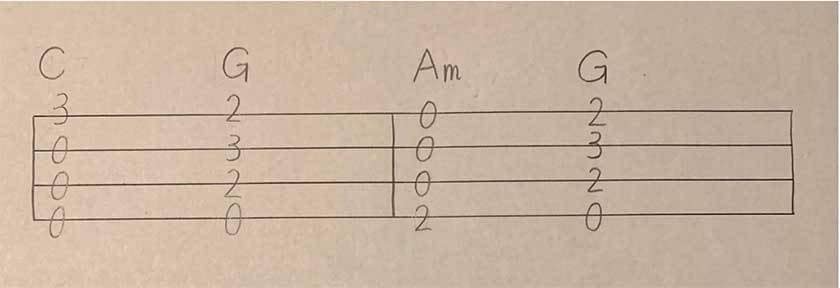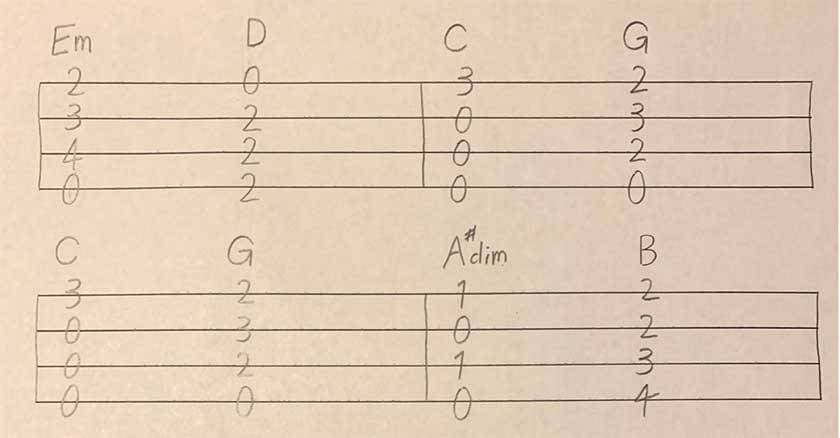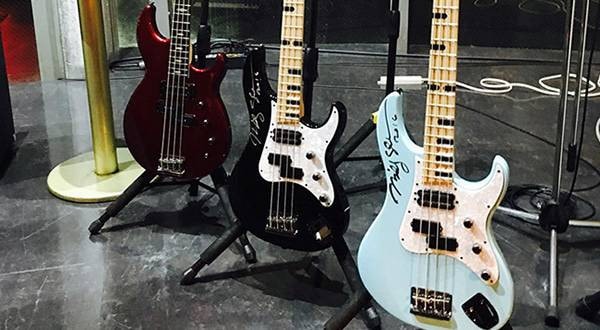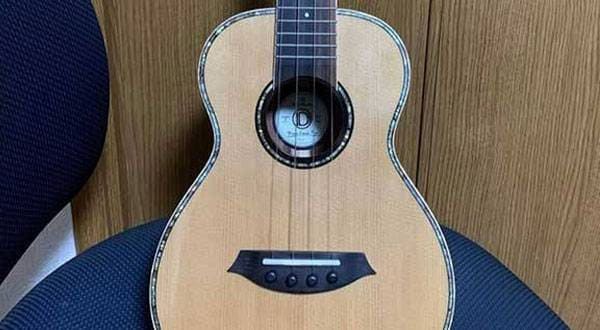Hello, this is Conservario.
Today, I’d like to introduce three of my favorite artists.
As mentioned in the title, they are Aimyon, Kenshi Yonezu, and YOASOBI.
Since all of them have performed at the Kōhaku Uta Gassen, many of you may already be familiar with them.
They are leading figures in modern J-POP.
If you listen to music on YouTube, chances are you’ve heard at least one song from these three artists.
So, if someone asks you to "play a popular song!", playing a song by one of them is a perfect choice.
I’ve also arranged their songs for the ukulele, so let’s practice together!
■ Aimyon
When it comes to singer-songwriters and playing while singing, I believe she’s at the top.
Her talent and popularity are simply unmatched.
Analyzing her hit songs makes her greatness even more apparent.
In a good way, her music follows common chord progressions and remains simple—yet the final result is unmistakably Aimyon.
The song that Aimyon wrote for the band DISH// has a different vocal style and sound production than her usual work, yet it’s instantly recognizable as an Aimyon song.
Anyone who composes music knows just how incredible that is.
Her lyrics are also highly sophisticated and deeply resonate with her fans.
I could go on and on about her amazing talent, but I’ll pause here for now.
Now, let me introduce one of the chord progressions that Aimyon frequently uses.

The C → G → Am → G chord progression is one of Aimyon’s signature progressions.
In her song "Marigold", this progression appears in the intro, verse, and chorus.
If you’re a fan of Aimyon, I highly recommend learning to play this progression first.
For a more authentic sound, try strumming it in 16th-note rhythm!
■ YOASOBI
YOASOBI is a duo consisting of vocalist ikura and producer Ayase.
Personally, I feel like their music embodies the very best of modern J-POP.
Their intricate chord progressions and unique melodies make their songs instantly recognizable.
ikura’s distinct voice captivated me from the very first listen.
What’s even more impressive is that their songs aren’t just complex—they’re also catchy and make you want to sing along!
This level of musical creativity is something only a genius can achieve, making it nearly impossible to replicate.
Many people want to cover YOASOBI’s songs, but attempting a perfect copy often leads to frustration.
That’s because their chord progressions are quite complex, and their tempos are fast.
So, I’ve simplified the chords—let’s give it a try!

The FMaj7 → G7 → Em7 → Am7 chord progression is a great example of YOASOBI’s sound.
Each chord includes a 7th, giving it a richer and slightly more complex tone compared to Aimyon’s progressions.
Although the chord names might look intimidating, the finger placements aren’t too difficult.
Keep practicing and memorize them by playing repeatedly!
■ Kenshi Yonezu
The artist behind "Lemon" and "Paprika"—just knowing this is enough to confirm that he is one of Japan’s top artists.
In the past, he was active under the name "Hachi", creating music without revealing his face.
Even back then, he consistently released songs of exceptional quality, proving he was no ordinary talent.
He has collaborated with many artists, yet every song still unmistakably carries Kenshi Yonezu’s signature style.
His chord progressions are often unconventional, but what stands out the most is his sound design.
You could call it arrangement work, but he effortlessly incorporates unusual and unique sounds into his music.
What’s truly remarkable is that these elements never feel out of place—they enhance the song, leaving fans thinking, "That’s Yonezu for you!" every time.
Let’s Try Playing the Intro of "Lemon"!

The chord progression is:
Em → D → C → G → C → G → A♯dim → B
The A♯dim (A-sharp diminished) chord really gives off that Kenshi Yonezu vibe.
It also appears frequently in "Paprika", so it’s definitely worth memorizing!
Although "Lemon" is a slow song, the chord changes must be done instantly.
Make sure to keep a steady tempo, or the song may lose its recognizable flow!
■ Summary
I introduced the chord progressions of some representative songs from these three artists.
I’ve simplified the keys, but you can use a capo to practice in the original key if you’d like.
If the songs I introduced don’t match your personal taste, I apologize!
Of course, playing only the songs you love is fun, too.
However, challenging yourself with songs you’ve never played or even heard before can significantly boost your skill level.
That’s because both chord shapes and strumming patterns are often completely different from what you’re used to!
Take on different songs and artists—it’s a great way to rediscover your own musical preferences!
It doesn’t matter whether it’s a trending hit or a classic song—both have valuable lessons to offer.
Once you get comfortable with the chords, try experimenting with different strumming techniques to expand your skills.
Thank you for reading until the end!
→ [SOUND HOUSE Ukulele Collection]
The “sound & person” column is made up of contributions from you.
For details about contributing, click here.











![[Enjoy the Ukulele Even More!] Can You Play Jazz on the Ukulele?](/contents/uploads/thumbs/5/2022/2/20220228_5_16884_1.jpg)

![[Enjoy the Ukulele Even More!] Do I Have to Practice the Basics?](/contents/uploads/thumbs/5/2022/2/20220221_5_16789_1.jpg)
![[Enjoy the Ukulele Even More!] Ukulele Condition Check You Should Do](/contents/uploads/thumbs/5/2022/2/20220214_5_16699_1.jpg)
![[Enjoy the Ukulele Even More!] Basic Knowledge Before You Start Playing](/contents/uploads/thumbs/5/2022/2/20220214_5_16700_1.jpg)

 ウクレレのチューニング方法
ウクレレのチューニング方法
 ウクレレの各部名称
ウクレレの各部名称
 ウクレレの種類
ウクレレの種類
 ウクレレスタートガイド
ウクレレスタートガイド
 めちゃラク!ギター講座
めちゃラク!ギター講座
 ウクレレ初心者講座
ウクレレ初心者講座















